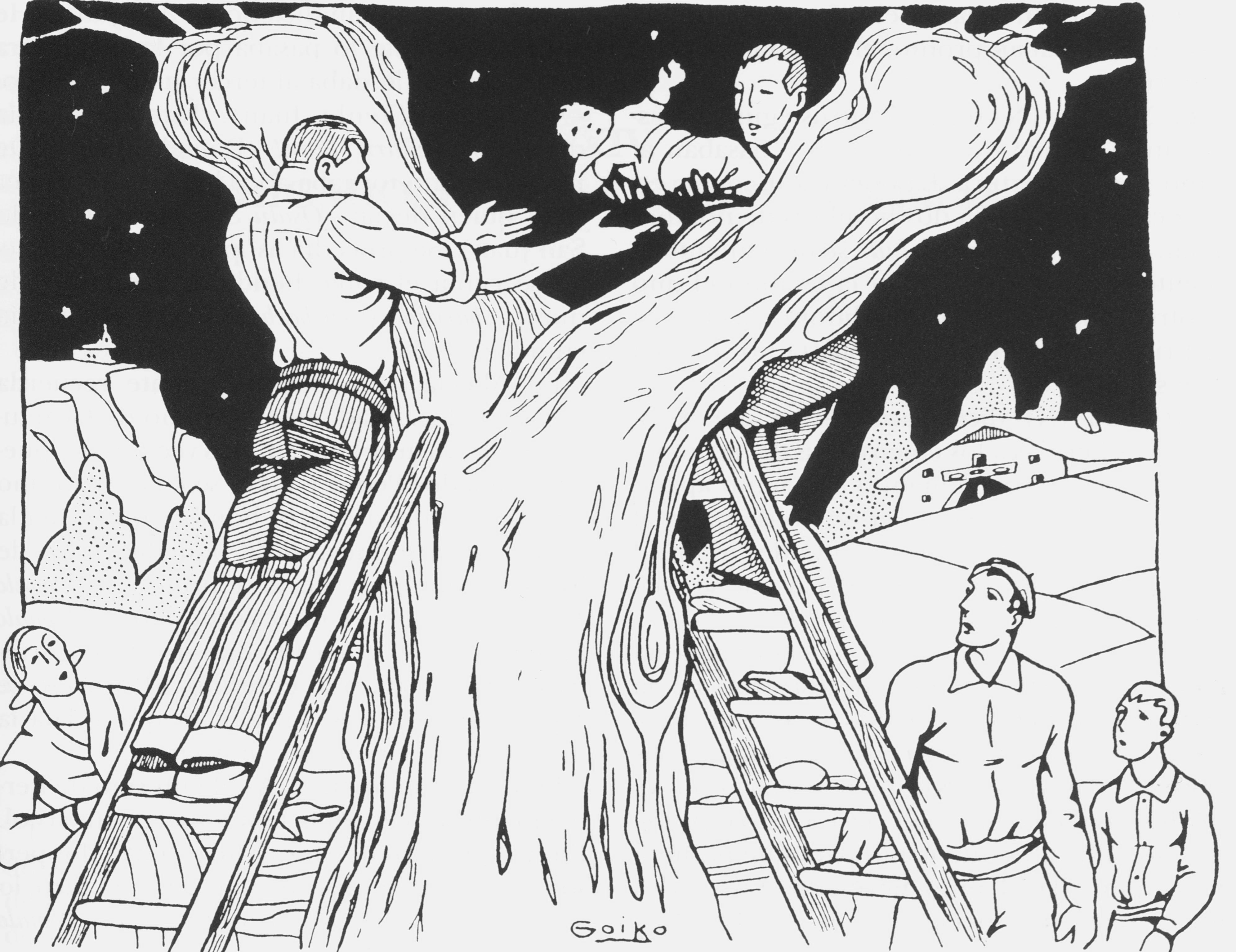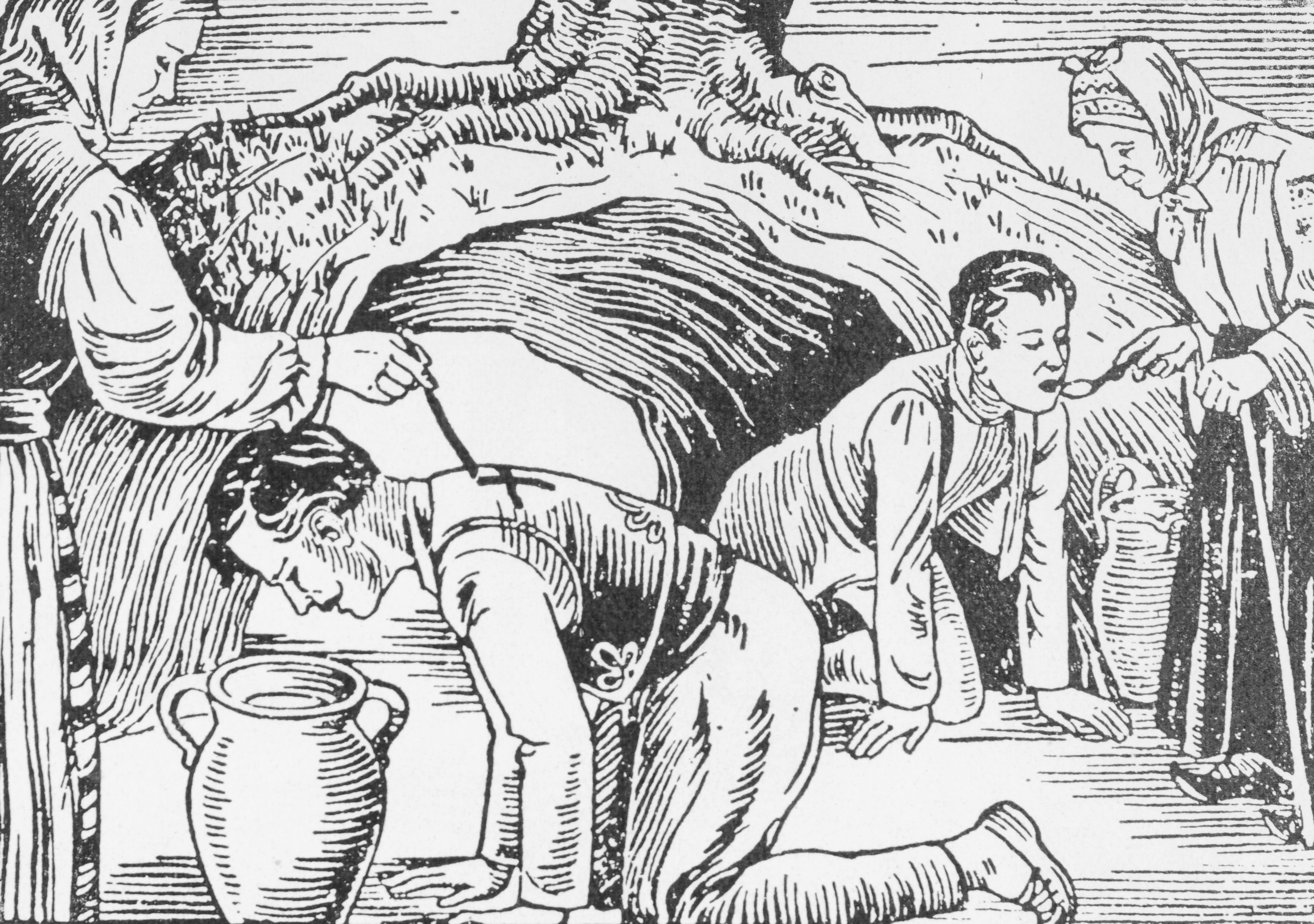Basque ethnography at a glance

Hernia repair rite on St John’s Night. Taken from: R.M Azkue. Euskalerriaren Yakintza, I. Madrid, 1947.
Many beliefs and rituals around the Feast of St John the Baptist which persist to this day are reminiscent of ancient celebrations of the summer solstice. They make up a variegated set of myths, symbols and practices regarding, along with others, fresh water springs, the morning dew, baths in the sea, flowers and herbs, bonfires and special trees.
Some of these traditions, such as making bonfires on St John’s Eve, have proliferated and spread to urban areas. On the contrary, and due to the decline of rural life and culture, those most closely linked to nature itself have faded away.
The hernia healing rite is an example of the latter. It is based on the magical powers of the oak, Quercus robur, a once dominant tree species in European forests. According to data gathered in the town of Zeanuri (Bizkaia) and contained in the Ethnographic Atlas of the Basque Country, the cure of congenital hernia had to be performed at midnight on the eve of St John’s Day (24 June). The trunk of a young oak tree was split open with an axe, and both halves kept apart. The afflicted infant was passed through the cleft by three men named John. One of them held the child, and on drawing it to the other side, he would say: Aiko, Juan¡ (Take him, John!). The second man received the child replying: Ekarri, Juan¡ (Give it to me, John!), and delivered it into the arms of a third who called out: Osatu, san Juan¡ (Cure it, Saint John!). The procedure was repeated three times.
The split tree was later tightly bound up, and as the cleft healed and grew together again, so it was believed would the child’s rupture.

The virtue of the oak tree to cure ill people in Serbia. Taken from: Justo Garate. Cultura biológica y arte de traducir. Buenos Aires, 1943.
It has been confirmed that such healing ceremonies on the night of St John were likewise held elsewhere in the Basque Country. In 1920 Barandiaran registered a case in Amorebieta (Bizkaia). The events took place in St John’s hermitage in Ofrendo, next to a wood of young oaks. He also found variations of the same rite in the councils of Abezia (Urkabustaiz) and Ametzaga (Zuia), both in the province of Álava, and in the village of Sara (Lapurdi) in the Northern Basque Country.
Similar rituals are observed by other European peoples.
Ander Manterola – Etniker Bizkaia – Director of the Ethnographic Atlas of the Basque Country
Translated by Jaione Bilbao – Language Department – Labayru Fundazioa
Reference for further information: Popular Medicine, part of the Ethnographic Atlas of the Basque Country collection.

